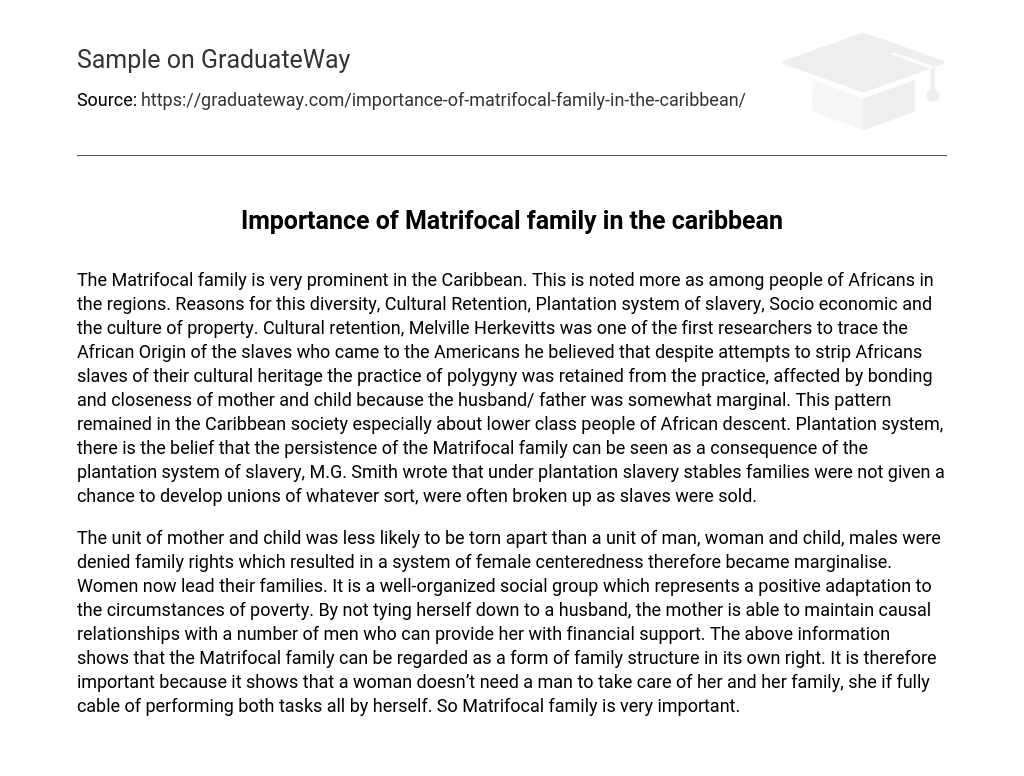The Matrifocal family is highly prevalent in the Caribbean, particularly among people of African descent in the region. This diversity can be attributed to various factors, including cultural retention, the plantation system of slavery, socioeconomic influences, and the culture of property. Melville Herkevitts was a pioneering researcher who traced the African origins of the slaves brought to the Americas. He observed that despite attempts to erase their cultural heritage, the practice of polygyny persisted and was influenced by the strong bonds between mother and child, as husbands/fathers were often marginalized. This pattern remained prevalent in Caribbean society, especially among lower-class individuals of African descent. The persistence of the Matrifocal family can also be seen as a consequence of the plantation system of slavery. M.G. Smith noted that stable families had little opportunity to develop under plantation slavery and were frequently torn apart through slave sales.
The Matrifocal family, in which the unit of mother and child is less likely to be separated than a unit of man, woman, and child, resulted from males being denied family rights. This led to a system of female centeredness and marginalization. In this family structure, women now take the lead in their families. It is a well-organized social group that adapts positively to the circumstances of poverty. By not binding herself to a husband, the mother can maintain relationships with multiple men who can provide financial support. This information emphasizes that the Matrifocal family is a distinct form of family structure. It highlights the significance of women’s independence in taking care of both themselves and their families, without the need for a man. Therefore, the Matrifocal family holds great importance.





